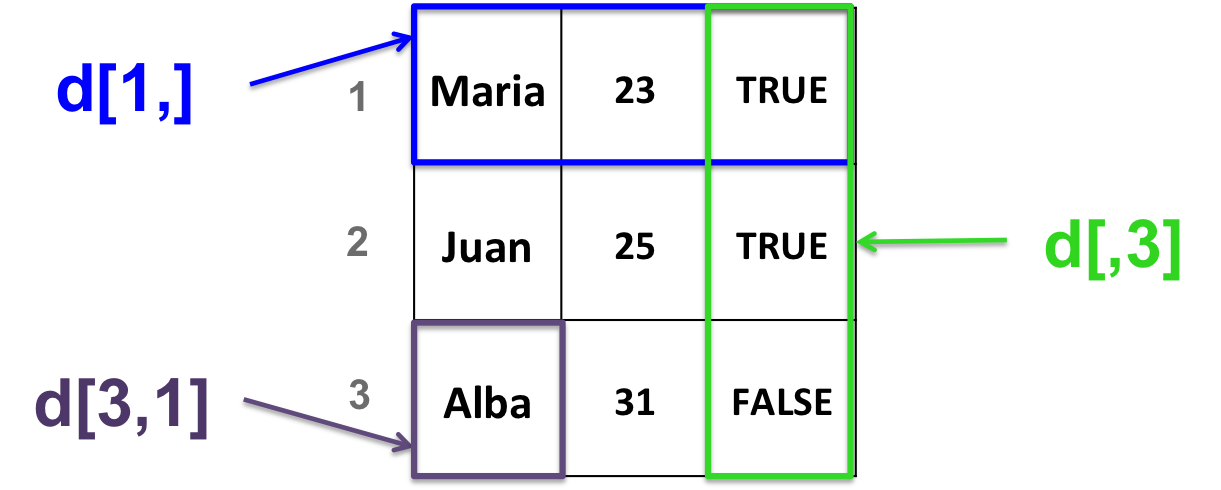9.6 Data frames
A data frame is a 2-dimensional structure.
It is more general than a matrix.
All columns in a data frame:
+ can be of different types (numeric, character or logical)
+ must have the same length
9.6.1 Create a data frame
- With the data.frame function:
# stringsAsFactors: ensures that characters are treated as characters and not as factors
d <- data.frame(c("Maria", "Juan", "Alba"),
c(23, 25, 31),
c(TRUE, TRUE, FALSE),
stringsAsFactors = FALSE)- Example why “stringsAsFactors = FALSE” is useful
# Create a data frame with default parameters
df <- data.frame(label=rep("test",5), column2=1:5)
# Replace one value
df[2,1] <- "yes"## Warning in `[<-.factor`(`*tmp*`, iseq, value = "yes"): invalid factor
## level, NA generated# Create a data frame with
df2 <- data.frame(label=rep("test",5), column2=1:5, stringsAsFactors = FALSE)
# Replace one value
df2[2,1] <- "yes"
# Works!- Converting a matrix into a data frame:
9.6.2 Data frame manipulation:
Very similar to matrix manipulation.
